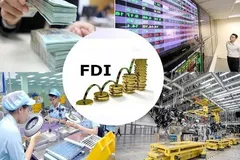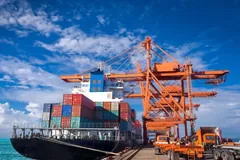
JOURNALIST: - Sir, what role has the combination of monetary policy and fiscal policy played in supporting economic recovery in 2024?
Mr. ĐÀO MINH TÚ: - Monetary policy and Fiscal policy are two pillars in macroeconomic management policies, especially in implementing the inflation control target. The SBV and the Ministry of Finance regularly exchange information on the monetary market, capital mobilization for the state budget, state treasury management, unified management of government bond interest rates, SBV bill interest rates and other types of operating interest rates.
On the monetary policy side, the SBV has flexibly and proactively operated tools to support liquidity for credit institutions (CIs), maintaining interest rates at appropriate levels to stabilize the monetary market, supporting inflation control. The implementation of foreign currency payments is also always coordinated by the two sides, creating conditions to maintain the stability of exchange rates and foreign currency status of commercial banks, and supply and demand of the foreign currency market.
GDP growth in 2024 reaches 7.09%, inflation is controlled below the target set by the National Assembly, major balances of the economy are ensured, contributing to creating a stable macroeconomic foundation.
- In 2025, the Government expects economic growth to reach the target of 8%, even higher expectations of double-digit growth. So is the expected credit growth of 16% in 2025 too modest, sir ?
- In 2025, the Government sets a GDP growth target of more than 8%, so how much credit capital is needed, how much capital from the Government, how much social investment capital, this is an issue that the State Bank is also very concerned about. We hope to have more capital from the bond market, securities and other capital sources from social investment, private investment to reduce pressure on credit.
Regarding the credit growth of 16% in 2025, it is only for management orientation, not a legal number. The ultimate goal is to control inflation, ensure support for economic growth, stabilize the value of money and exchange rates. However, the State Bank encourages credit growth to drive economic growth such as green credit, avoiding uncontrolled hot credit growth by commercial banks. Therefore, the State Bank is ready to open more room if the capital absorption capacity is better and businesses can access capital.
- So, what specific goals will the State Bank's monetary policy management orientation in 2025 focus on, sir?
- In the context of many complex difficulties, challenges and intertwined advantages, the State Bank will operate open market operations flexibly, closely following the monetary policy goals. Recapitalize credit institutions to support liquidity, lend to programs approved by the Government and the Prime Minister, support restructuring of credit institutions and handle bad debts. Flexibly manage exchange rates to stabilize the foreign exchange market, contributing to stabilizing the macro economy and controlling inflation. Assign credit growth targets for 2025 to credit institutions from the beginning of the year, and publicly announce them so that credit institutions can proactively implement them. But also direct credit institutions to grow credit safely, direct credit to production and business sectors, priority sectors according to the Government's policy, strictly control credit for sectors with potential risks; create favorable conditions for people and businesses to access bank credit capital...
- Sir, the world economic and political situation is still unpredictable, has the State Bank anticipated these situations?
- Impacts from the world market can be mentioned as complicated geopolitical conflicts; the world economic growth outlook is not really clear; the trend of trade protectionism and capital flow fluctuations; the unpredictable monetary policy roadmap of major central banks, especially the US Federal Reserve - Fed; fluctuations in international capital flows; complex fluctuations in world commodity prices, increasing trends in food security in countries; impacts of natural disasters, extreme weather, etc.
These factors are likely to put pressure on exchange rates and the foreign exchange market. Not to mention, global inflation has decreased but is not yet sustainable, potentially posing risks of increasing pressure in the context of the large openness of the Vietnamese economy.
Domestically, in addition to favorable factors such as the Government's determination to support economic growth, public investment and support solutions, and difficulties continue to be strongly implemented..., the economy still faces many difficulties and challenges from the above external factors. Meanwhile, the pressure on capital supply from the system of credit institutions for the economy is still large, including medium and long-term capital, when mobilizing capital from the corporate bond and securities markets faces many difficulties. This potentially poses large maturity and liquidity risks for the banking system.
- Thank you very much




















